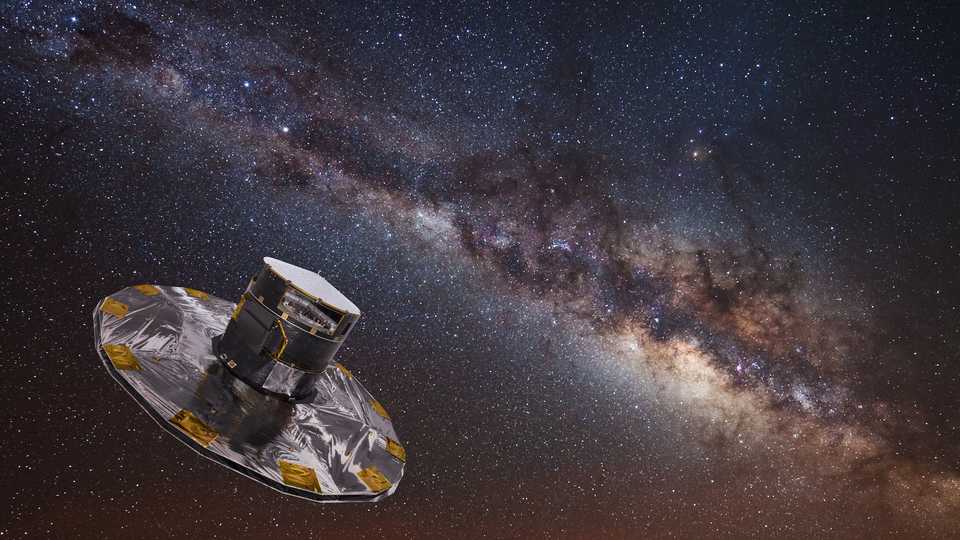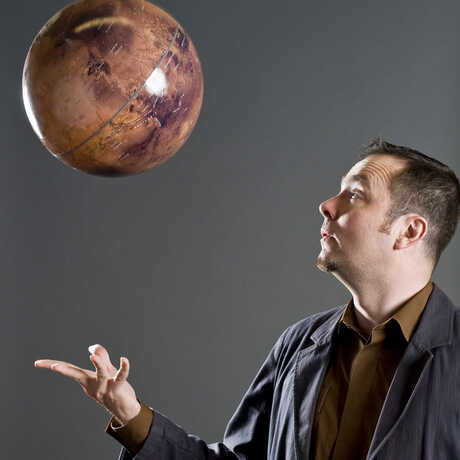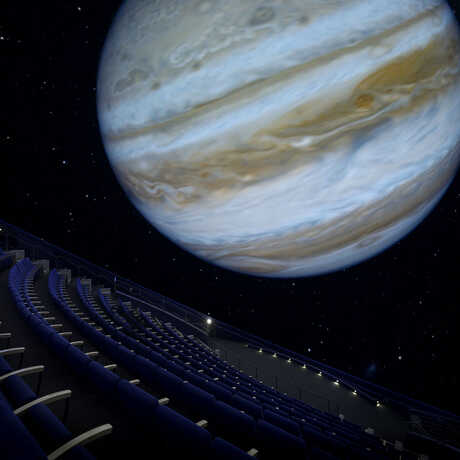Science News
A Milky Way Map, The Birth of a Black Hole, and More

The Moon’s Effects on Earthquakes
The new and full moons that each occur once per month have effects here on Earth. For example, just look at ocean tides. This week, scientists report that these effects run deeper—in the form of very large earthquakes such as those in 2004 in Sumatra, 2010 in Chile, and 2011 in Japan.
The team created models for thousands of earthquakes that have occurred over the past two decades, reconstructing the size (or amplitude) of so-called “tidal stresses” in the two weeks prior to each event. While the team found no correlation between small earthquakes and tidal stress, they did find that large earthquakes (magnitude 5.5 or greater) were more likely to occur during these times. In fact, the scientists suggest that smaller earthquakes (magnitude 5.0) have a higher likelihood to grow into larger earthquakes (as high as magnitude 9.0) under these circumstances.
Precisely how large earthquakes initiate and evolve is not fully understood, but they may grow via a cascading process whereby a tiny fracture builds up into a large-scale rupture. So while we’re still far from predicting when and where earthquakes will occur, knowledge of new and full moons and their effects on tidal stresses in seismic regions could help in assessing the probability of a major earthquake. –Molly Michelson
Protecting Mars from Our Own Curiosity
Ever since NASA’s Mars Science Laboratory, more famously known as “Curiosity,” was delivered to Mars in 2012, it has rolled around on its six wheels, leaving track marks and a secret Morse code message in the Martian dust, zapped rocks with its laser (Pew! Pew!), taken selfies, and started climbing a mountain. It even sang “Happy Birthday” to itself on the first anniversary of its landing.
Curiosity seems to be having fun—but even on its own private planetary playground, there’s one thing this robotic four-year old isn’t allowed to do, and that’s splash around in puddles of water. That’s because of a protocol known as planetary protection. After all, how would we feel if some alien robotarrived in a strange vehicle, roamed around, and infected us with space-germs? That’s what NASA is trying to prevent from happening on Mars.
Scientists don’t want interplanetary spacecraft to carry any invasive Earthly microbes with them that might establish themselves on other planets and displace any native species. That’s why the vehicles are decontaminated to varying degrees, depending on the nature of their missions. Vehicles destined for flybys hardly need to be sterilized at all, since no planetary contact is expected. On the other hand, orbiters need to be a little cleaner, since there’s a possibility that they may eventually fall out of orbit (a fate expected to befall Mariner 9 around 2022, after a half-century circling the Red Planet). Or a spacecraft intended only to orbit might unexpectedly (and embarrassingly) crash to the surface. Landers that are designedto reach the surface must be even cleaner (again, depending on their exact mission goals), and rovers that can move around—yup, cleaner still. At the top of the pyramid are the landers specifically designed to seek out life, such as the two Viking landers that set down in 1976 and ESA’s Beagle 2, which successfully landed (but stopped communicating) in 2003. They had to be as sterile as possible so as not to provide false-negative results, detecting life that they themselves might’ve brought to Mars.
The nuclear-powered Curiosity, whose meanderings have the potential to enter areas with life-supporting conditions, presents a conundrum that’s more than a little frustrating for scientists eager to determine whether life has arisen elsewhere in the Universe. Although Curiosity uncovered geological and mineralogical evidence of a watery history at its landing site in Gale Crater, it now seems that there’s potential evidence of existing water close to its path up the side of Mt. Sharp (officially known as Aeolus Mons). The evidence comes in the form of one of the recurring slope lineae (RSL) that were first observed in 2011 by the Mars Reconnaissance Orbiter. These are apparently seasonal features that appear and disappear, suggesting that they may be caused by water either seeping up from below or condensing out of the atmosphere, and we wrote about them here last year. However, they were discovered too late during the development of Curiosity’s mission to change anything.
While scientists would love to see Curiosity inspect a possible source of water, NASA’s playing it safe—especially since there was a violation of strict of pre-launch procedures, resulting in the premature opening of a box of drill bits that was supposed to have been kept closed until landing on Mars. It may not seem to be such a big deal, since the drill bits were exposed in an already-sterile environment, and some scientists (as well as SpaceX’s Elon Musk) argue that the fuss over planetary protection is unnecessary. However, others believe we can’t be too careful: in the words of Jorge Vago, the European Space Agency (ESA) Project Scientist for ExoMars mission currently en route to Mars, “We don’t want to be remembered as the species that went to another planet and wiped out whatever life was there.”
Launched in March, ExoMars will arrive in October and is expected to deploy a small lander, called Schiaparelli, to the surface. –Bing Quock
A “Stealth Black Hole” May Have Quietly Sneaked Into Existence
Stars more massive than our sun are expected to end their lives in titanic explosions known as supernovae, during which their outer layers are violently blown away. There are several different ways supernovae can be triggered, depending on whether the stars are alone or part of binary systems, and supernovae are an important mechanism by which atoms of the elements are created, dispersed, and recycled in the Universe. It’s also how the supermassive end-stages of stellar evolution are formed, such as neutron stars and even more mysterious black holes.
But a certain percentage of stars between about ten and 40 times the mass of the Sun are thought to evolve into black holes without blowing up. These are labelled “failed supernovae,” and a team of astronomers from Ohio State University may have found one in a galaxy 20 million light years away. In this case the suspect star is about 25 times the mass of the Sun.
In a paper that has been submitted for peer review, the astronomers report that while they observed the supergiant star N6946-BH1 with the Hubble Space Telescope in 2009, the star suddenly flared to about a million times the brightness of the Sun. This impressive brightening, however, was not a supernova explosion, but—believe it or not—what the astronomers call a “weak optical outburst.” An actual supernova would be billions of times brighter than the Sun, and what the astronomers think they detected was part of a rather quieter, but complicated, process by which electrons and hydrogen ions surrounding the star recombined, causing the brightening that was observed but not a catastrophic detonation. After the outburst faded, the star was no longer seen and was replaced by a warm infrared glow.
So where did the star go, if it didn’t blow itself to smithereens? Explanations include a merger with another star or obscuration by clouds of dust surrounding the star, but there are counterarguments for both ideas. And then there’s the possibility of a black hole forming, and currently there are no real arguments against that idea. To verify this theory, the next step is to enlist NASA’s orbiting Chandra X-ray Observatory to detect x-rays of the specific type emitted by matter entering a black hole. Even if x-rays are not detected, that wouldn't necessarily mean a black hole isn’t there… because the star apparently isn’t, either, and the Ohio State team says that the longer the star itself isn’t seen, the more likely that a black hole is the answer. –Bing Quock
The Milky Way—It’s Full of Stars
This week scientists released a 3D map of the Milky Way, with positions for 1.1 billion stars, which is only about one percent of our galaxy’s stellar content. Still, this catalogue is the most detailed yet, offering a glimpse of more to come from ESA’s Gaia mission.
Gaia is on a five-year mission, and this first release is based on data collected only during its first 14 months of scanning the sky, up to September 2015. Eventually the team of about 450 scientists and software engineers hopes to chart the distances, movements, and changes in brightness of these billion stars and find up to ten thousand exoplanets, reveal tens of thousands of failed stars and supernovae, and observe hundreds of thousands of asteroids within our own solar system.
“The satellite is working well and we have demonstrated that it is possible to handle the analysis of a billion stars,” says Timo Prusti, project scientist at ESA. “Although the current data are preliminary, we wanted to make them available for the astronomical community to use as soon as possible.”
What do some of those data reveal? The distances and motions for two million stars, including about 400 stellar clusters (groups of relatively young stars that were born together) up to 4,800 light-years away, and 3,194 variable stars (stars that rhythmically swell and shrink in size, leading to periodic brightness changes and allowing astronomers to measure cosmic distances far, far away).
Some of the data provide information for objects a little closer to home. In July, Pluto passed in front of a distant, faint star, offering a rare chance to study the atmosphere of the dwarf planet as the star gradually disappeared and then reappeared behind Pluto. Early results hint at a pause in the puzzling pressure rise of Pluto’s tenuous atmosphere, something that has been recorded since 1988 in spite of the dwarf planet moving away from the Sun, which would suggest a drop in pressure due to cooling of the atmosphere.
“These examples demonstrate how Gaia’s present and future data will revolutionize all areas of astronomy,” says Anthony Brown, chairman of the Gaia consortium, “allowing us to investigate our place in the Universe, from our local neighborhood, the Solar System, to Galactic and even grander, cosmological scales.” –Molly Michelson
Image: ESA/ATG medialab; background: ESO/S. Brunier


